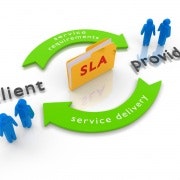Coming to grips with software licensing
Thanks to virtualisation, the cloud and new delivery models like software-as-a-service (SaaS), scalability and flexibility have become achievable must-haves for both incumbent organisations and challenger businesses.
Yet most discussions about scalability and flexibility take the benefits for granted, without considering all of the costs – which, when looking at areas of operational expenditure like software licensing, can often be far greater than business leaders may imagine.
These leaders need to work closely with their IT professionals to manage the contracts, usage, and price of their software assets if they want to not only scale as and when they need to, but minimise risks to their bottom line in the process.
Licence to bill
The issue of software licensing is all too easy for business and IT leaders alike to ignore. As a company evolves and grows, it uses more types of software in greater volume, making licences increasingly hard to track and often more expensive to procure if not centrally managed.
Increasing licence counts for enterprise software to keep up with growing headcount or changes in staffing doesn’t only consume budget, but often proves time-intensive, particularly when migrating to new versions of a software platform.
And the licence compliance requirements of software agreements – including the use rights, terms and conditions so often overlooked when installing a new program – usually prove opaque to any organisation lacking specialist software asset management, licence entitlement and legal knowledge: in short, most businesses.
While the rapid growth of SaaS delivery models promises to alleviate some of these issues, businesses need to be mindful that SaaS and cloud based software still require managing licence agreements. Often, these contracts will apply usage and/or user based license metrics – which may seem more cost effective to the business, but can also introduce additional complexity when managed alongside on-premise software licences.
When it comes to software licences for both traditional and SaaS packages, ignorance can often seem like bliss – at least until a software licence audit and associated unbudgeted true-up fees occurs. Flexera Software’s Software Pricing and Licensing Survey found that in 2012, almost 1 in every 4 enterprises globally paid more than $1 million in audit true-up fees. This is the accounting term for payments to software vendors to bring an organisation back into compliance when software installations or usage exceed their licence entitlements. Unsurprisingly, one third of enterprises said they were dissatisfied with their current methods for managing software licences and usage.
The large costs of licence non-compliance can be all the more dramatic due to the surprise nature of most licence audits. In many cases, the abrupt introduction of unbudgeted true-up costs or penalties means resources must be diverted away from strategic programs required by the organisation – which can be difficult to explain to the C-suite.
Putting software on the board
In other words, the issue of software licensing can have severe repercussions that escalate to board-level discussions, not just day-to-day IT operations. Business leaders need to work alongside their IT and procurement counterparts to get a clear picture of how licensing policies and practices could affect their growth strategies and organisational responsiveness. IT managers, for their part, need to implement transparent policies and tools which not only increase IT asset visibility, but optimise software licensing throughout their organisations.
For many organisations, the tools currently used to manage software licensing may be outmoded or inadequate for the task. A typical IT ecosystem today consists of traditional on-premise, installed-on-the-endpoint software, SaaS and hosted applications, virtual servers and virtual desktops – each of which adds an additional level of complexity that a spreadsheet or basic database can’t hope to successfully track. Software licence management solutions need to provide several things to really streamline processes for businesses:
• End-to-end visibility of hardware and software assets and licences in the organisation;
• Automatic processing of software purchase orders and reconciliation with software inventory;
• Contract management capabilities to keep track of renewals, payments and contract expiry; and
• The ability to automatically apply vendor specific “product use rights”, as defined in the licence agreement, to optimise licence consumption and reduce ongoing costs.
Those functions, if performed well, will give business and IT leaders a clear snapshot of their current licensing position at any given time, to ensure that the organisation buys only what it needs and uses what it has.
Business leaders should consult with their IT managers on what policies and technologies can assist the efforts of these licence optimisation solutions to ensure greater compliance, optimisation and operational efficiency. An enterprise app store, for example, may assist in transitioning the enterprise to more cost-effective software procurement and fulfilment, limiting the risks that ensue from each individual or department buying their own applications.
In most cases licence management solutions, working in conjunction with the enterprise app store, will be able to automatically reclaim and reassign licences to where they’re needed most, ensuring full utilisation of available licences at any given time.
Of course, the best remedy is having an understanding of what optimised licence management means to the organisation. While an in-house software asset management (SAM) expert, or team, may be viable for larger businesses, software license optimisation providers will also be able to deliver counsel on best-practice processes. Like most strategic initiatives, gaining control over the software estate requires people, processes and technology.
Beyond the use of software licence optimisation solutions, training IT staff in best-practice licence management will not only reduce the risk of costly true-up or punitive fees, but also allow them to realise significant savings on software going forward. That, in turn, allows decision-makers to refocus on growth priorities and changing conditions – freeing up the business to respond when, where, and however it needs to.
Tom Canning is the vice president Asia Pacific of Flexera Software













